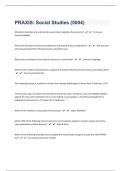Samenvatting
SHRM summary articles
- Instelling
- Tilburg University (UVT)
This is a complete summary of the articles from the lectures and work-groups of SHRM. In the file you can find definitions, comparisons between articles, examples and important points for the final exam.
[Meer zien]





